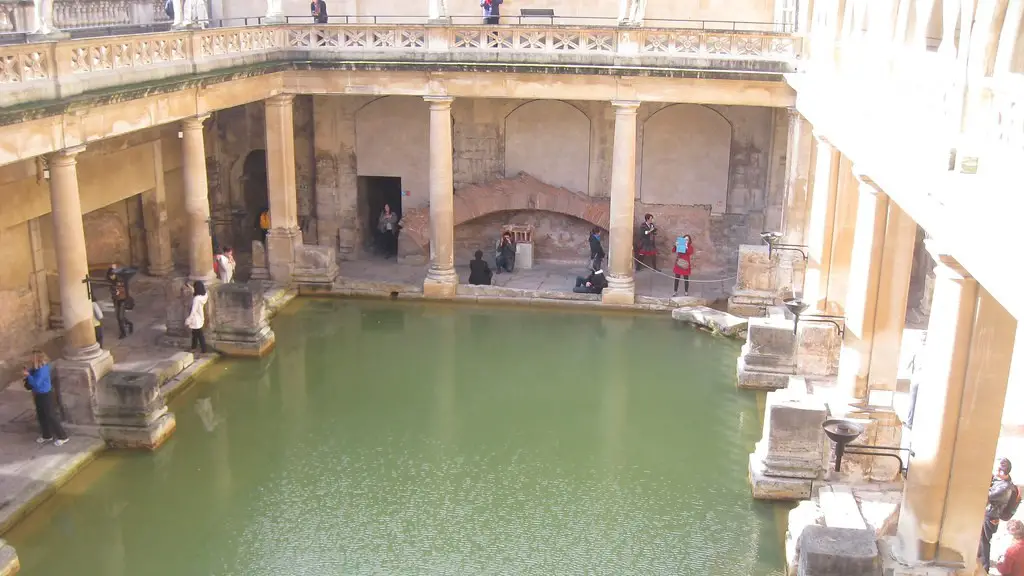The concept of marriage has been around since ancient times but it has changed dramatically throughout the ages. In ancient Rome, marriage had a specific purpose and was seen as a matter of public interest and public policy. Roman marriages were seen as a way of ensuring the continuity of the patrician families, strengthening alliances with other families, and ensuring the production of legitimate heirs for the families. Marriage was a legal issue in Roman society and there were particular rules and regulations governing Roman marriages.
Marriage was an important social and political institution in ancient Rome and thus there were very specific rules that had to be followed. The Roman marriage ceremony itself was very elaborate and it was attended by family, friends and even government officials. The main purpose of the Roman marriage ceremony was to seal the union between two families and to ensure that the bride and groom’s families were connected. In other words, the two families of the bride and groom were meant to build a relationship that would last beyond the marriage itself.
In addition to building a relationship between two families, marriage in ancient Rome also served as a way of solidifying social and economic ties between two households. The groom’s family would bring wealth and respectability to the bride’s family and the bride’s family would bring security and protection to the groom’s family. This union was seen as beneficial for both families and it was an important part of building the social and political networks of ancient Rome.
The man was expected to be the head of the family and the wife was expected to obey him. The Roman wife, in particular, was expected to run the house and take care of the children and, in exchange, the husband was expected to provide for the family financially. Therefore, marriage was seen as a way of ensuring the survival of the family and ensuring the social status of the couple and their immediate descendants.
The main purpose of marriage in ancient Rome was to ensure that the empire had a strong and powerful ruling class, and that there were legitimate heirs to carry on the family name and political connections. Therefore, marriage was seen not only as a social and economic institution, but also as an important part of making sure that the families were connected and that the patrician families could control the future of the empire.
Roman Law and Roman Marriage
Roman law had a significant influence on marriage in ancient Rome. The main law governing marriage was the Lex Iulia de maritandis ordinibus, which was enacted in 18 BC and stipulated that the consent of both parties and the presence of a witness were needed for a marriage to be legally binding. Furthermore, certain restrictions were placed on marriages so that, for example, individuals from certain social classes were not allowed to marry each other. Therefore, Roman law served not only to regulate marriage, but also to maintain social class divisions within Roman society.
Marriages in ancient Rome were also closely regulated by certain religious ceremonies. For example, the Roman wedding ceremony included the offering of sacrifices to the gods. This was seen as a way of offering respect to the gods and invoking their protection and blessings on the couple’s marriage. Thus, marriage was seen as a religious as well as a legal union.
In addition to legal and religious regulations, marriages in ancient Rome were closely scrutinized by the patrician families. Only those marriages that were deemed to strengthen the family and its political networks or alliances were seen as being beneficial. This was seen as a way of ensuring that the family was able to maintain its political influence and power.
Divorce in Ancient Rome
Divorce in ancient Rome was common and it was seen as a way of ensuring that marriages were in the best interest of both parties. The Lex Iulia de maritandis ordinibus, for example, allowed for a divorce if it was deemed necessary for the parties to separate. This law was not strictly enforced, however, and divorce was relatively easy to obtain. It was also common for men to divorce their wives if they were not fulfilling their duties as a wife. Women, on the other hand, could divorce if they were being mistreated by their husbands, or if their husbands had committed adultery.
Divorce in ancient Rome was seen as being in the best interest of both parties and it was relatively common. This is not to say that divorce was completely accepted by Roman society, however, as it was generally viewed negatively. Divorced women, for example, were seen as being undesirable and stigmatic. Most divorced women were rarely able to remarry and thus their social status was greatly diminished.
Marriage and Women’s Rights in Ancient Rome
Roman women had few rights and their status in society was greatly limited by their gender. Women were expected to obey their husbands, to raise the children, and to take care of the household. Moreover, women had no right to own property, to vote, or to participate in public life. Marriage was seen as a way of protecting women, providing them with economic stability, and ensuring that they had a voice in their households.
Although marriage in ancient Rome served to protect women and ensure the ongoing economic stability of their families, it also limited their freedom. Women were expected to remain faithful to their husbands and were expected to obey them. Furthermore, women were expected to remain married to their husbands for life, as divorced women and widows were seen as being undesirable in Roman society.
Conclusion on Ancient Roman Marriage
Marriage in ancient Rome was seen not only as a way of building relationships between two families, but also as a way of ensuring the continuity of the patrician families and strengthening the political networks of the empire. Roman law, religious ceremonies, and the expectations of the patrician families all played a role in determining who was allowed to marry, who was allowed to divorce, and who was expected to remain married for life. Although marriage in ancient Rome was seen as a way of protecting women and ensuring their economic stability, it also limited their freedom and their status in society.
Repercussion of Ancient Roman Marriages
The institution of marriage in ancient Rome has had a lasting effect on modern marriage, as many of its customs and traditions are still part of the institution today. For example, the concept of the head of the family and the wife’s role in running the house and raising the children is still very much present in our society. Furthermore, the idea of the bride’s family “giving away” the bride at the ceremony, while the groom’s family “receiving” her, is still part of the wedding ritual in many parts of the world.
In addition, Roman law was a significant influence in terms of the legal aspects of marriage. Roman law was the first legal system to establish the need for witnesses and the importance of the consent of both parties in making a marriage legally binding. Furthermore, Roman law also established some of the ways in which a marriage could be dissolved, such as through the concept of divorce.
The concept of marriage in ancient Rome has also been influential in terms of the status of women in society. Even though women in Roman society had limited rights and were legally considered the property of their husbands, marriage provided them with a certain level of freedom and legal protection that was not available to unmarried women. Therefore, marriage was seen as a way of protecting women and ensuring their social status.
Role of Marriage in Ancient Rome’s Legacy
Marriage in ancient Rome continues to have an impact on our society today. Even though it may not be as closely regulated as it was in the past, its influence can still be seen in the structure of our legal codes and in the traditions and customs surrounding marriage. Furthermore, its influence can be seen in the way that women are viewed in society and in the way that society views those who are divorced or widowed.
Therefore, although the purpose of marriage in ancient Rome may have changed over time, its influence continues to be seen in modern society. Marriage in ancient Rome was an important institution that served to strengthen the patrician families, to ensure the continuity of the empire, and to protect and provide for women. Although the purpose of marriage in ancient Rome has evolved over time, its legacy continues to have an impact on our society today.




